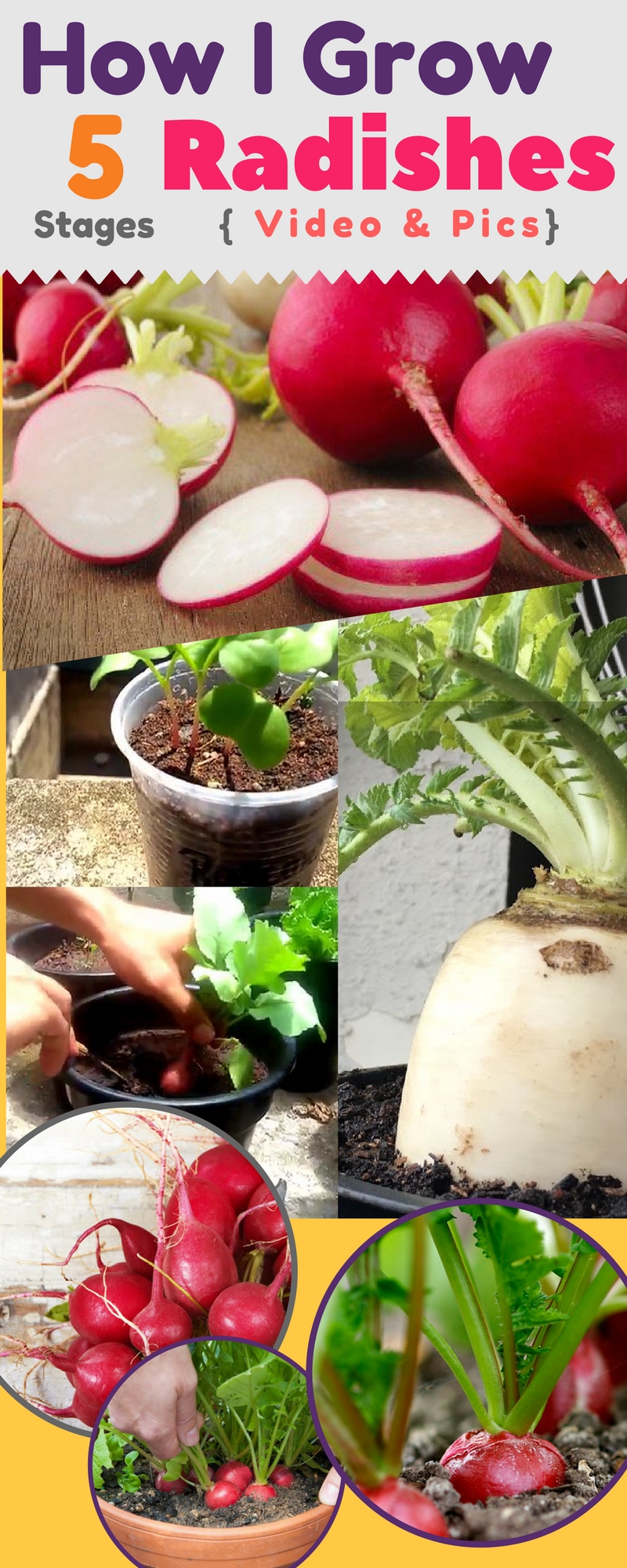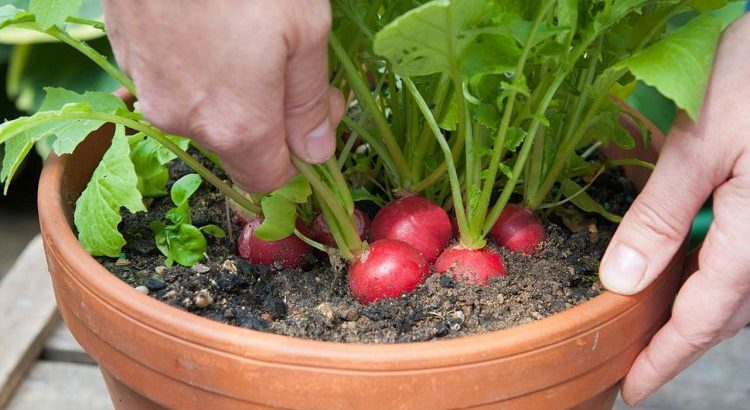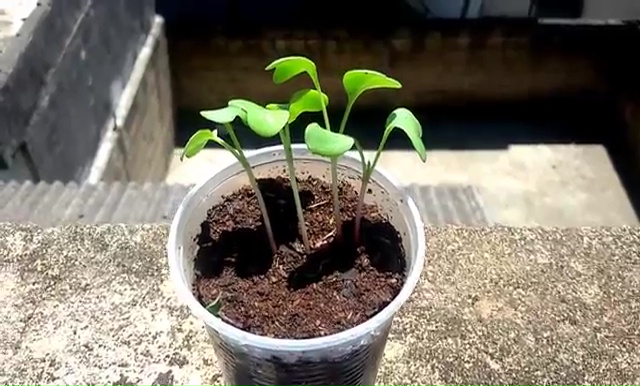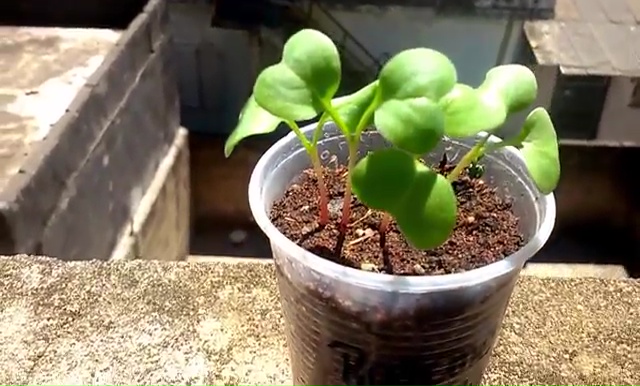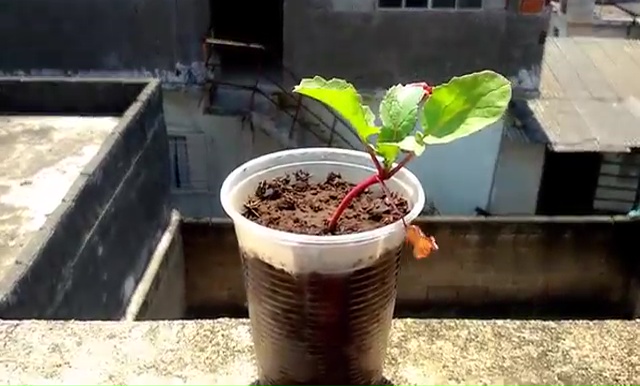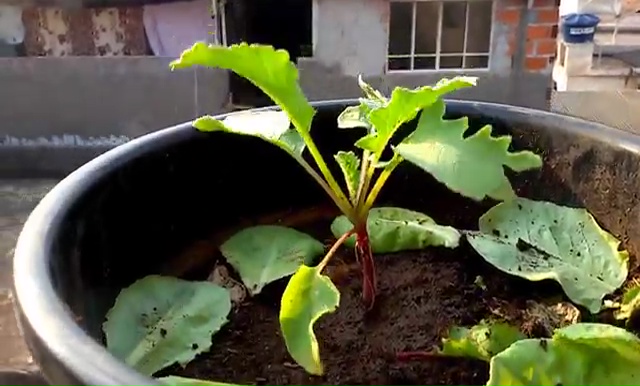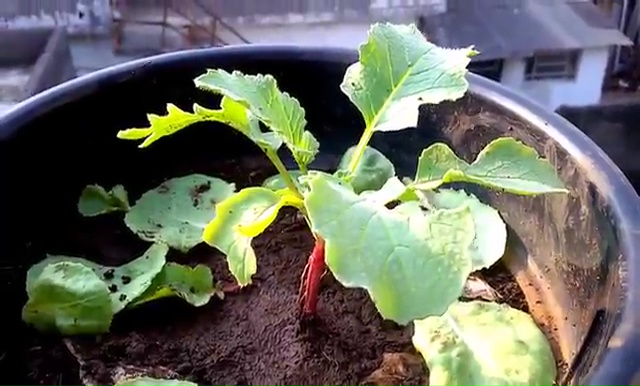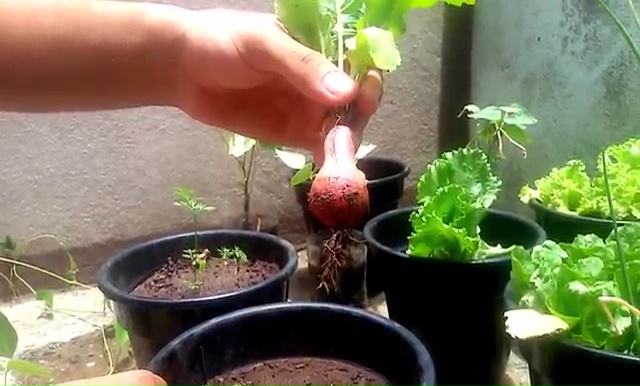Radish is a root vegetable which grows as a starchy edible root of a plant. This vegetable belongs to the Brassicaceae family which comes up in an attractive scarlet shade. Radish is considered as one of the highly nutritious veggies around that is mostly eaten in raw form as a crunchy salad element. The extraordinarily fast-growing capacity has made this vegetable even more popular among the new age gardens. Thus, numerous vegetable lovers give this winter crop a try in their own garden as well as their small container garden area! Let’s check the precise procedure of growing this vegetable at your home, take a look-
Growing Radish:
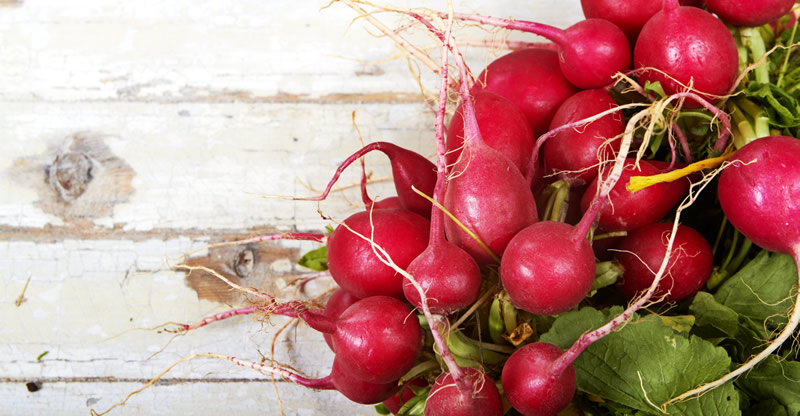
Soil:
- Radish must be planted in a ground where the soil is well-drained and loose, thus, it will be better if you can sow the radish seeds in a sandy type soil, instead of clay base oil.
- Remove any kind of rock or plod from the soil; otherwise, the drainage system wouldn’t work properly. Rock will also bifurcate the root if they stay near anywhere of your radish root.
- Radish needs rich soil to grab the adequate nourishment from it. Combine organic matter or garden made manure to your soil to get the right content of richness.
- Maintain a pH balance in between 5.8 to 6.8 for the proper acidity for your radish plants.
- Though radish is regarded as a winter crop yet, it claims lots of heat or warmth in the soil throughout the whole growing session. Hence, keep the soil temperature in between 55 to 65 ̊ F for the utmost time or cultivating.
- Never let the temperature down from 60 ̊ F during the period of germination, or it will slow up the speed of germination of radish seeds.
Season:
- Radish is the crop of the winter season, thus it is better if you can plant the seeds during spring or autumn seasons.
- The crop will grow greatly if you can start the plantation process exactly 2 weeks before the last frost in the spring
- Radish needs only 3.5 to 4 weeks to form mature, and it can’t stand against extremely hot or excessively cold weather for too long. Consequently, start the plantation process t the precise date when the crops will grow before the climate starts having a consecutive day of winter or summer.
- Though this root vegetable could grow in the seasons of summer, spring, autumn apart from the winter, especially depending on the varieties of radish; yet winter-grown radish are the best in flavor from every aspect than any other seasonal radishes of all time!
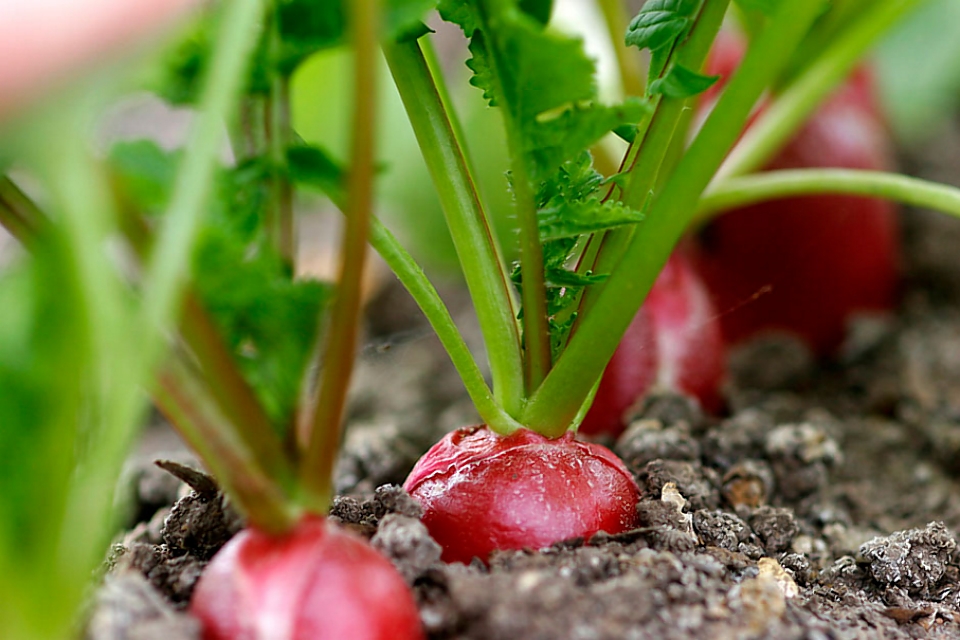
Planting:
- At first, selected a sunny place in your garden, which could get at least 6 to 7 hours of sunlight a day, without any interruption.
- To begin the plantation, clear all the rocks and weeds from your selected spot and arrange the place with the exactly soil type we have mentioned above.
- After that, till the place by a tiller if possible, to get the even better result of your cultivation!
- Now, make some holes in a row on the ground to sow the seeds and make sure that the holes individually contain a depth of ½ inch and 2-inch apart from each other.
- If you are planting the seeds in the garden area directly then make several rows and plant plenty of seeds at once. In that case, leave at least 1-foot gap from one row to another.
- If you have chosen larger radish to grow then, dig holes with the depth of 1 to 1.5 inch deep, otherwise, the roots wouldn’t grow properly.
- Some gardeners like to plant the seeds into the seed tray and then transplant them in the garden area after the gap of the first However, we will recommend you to sow the seeds directly in the garden as because; radish plant contains delicate root system. Thus, if you ever hurt the root for a single time, the cultivation could be ruined entirely!
- After sowing the seeds, cover them up with some more soil-fertilizer mix from the top and water them heavily.
- Make certain that your radish bed is moist for the foremost times but not soaked after watering them thoroughly.
- As the seeds are only 1-inch under the soil thus, make sure that your watering neither drowning nor harming any of radish seeds during the watering process.
- Germination will occur within 5 days of the plantation, after that take intensive care of your radish plants until they reach the time of harvesting.
Step by step: Growing Radish Plant
Care:
- Increase the amount of water as the plants grow, and every time make sure that the excess water is draining out properly.
- Remember that lack of water drives you towards the cracked and undeveloped crops at the end!
- Use fast working fertilizer than slow and time released manure as this vegetable wouldn’t give you much extended period to work and grow incredibly fast!
- When the newly germinated stems would reach the height of 1 inch, start seedling them 2 to 3 inches apart to provide each plant enough space to grow.
- Fertilizing the soil weekly and watering evenly after one day gap will help you to get a handful of healthy crops at the end of your course.
- Always make sure that the soil of your selected garden area consisting at least 3 to 4 inches layer of compost at the initial stage of your cultivation.
- You can add a thin layer of light mulch element if needed, it will help to keep the base of your plant moist but prevent of being soaked by water.
- Finally, protect the crops from the attack of any kind of pest and diseases to arrive the harvesting process flawlessly.
Related Video: How to Grow Organic Radishes
Pests and Diseases:
Radish is similar to any other vegetable of cabbage family thus; most of the typical cabbage pests or insects attack this plant as well, along with its stems and roots. Diseases are also the most frequent ones for radish as any other root vegetables. Cutworms, flea beetles, aphids, harlequin bugs, cabbage loopers, etc. are some common insects of radish plants which eternally attack the foliage of radish. On the other side, Alternaria blight, black rot, clubroot, downy mildew, Fusarium wilt, scab, white rust, etc. are some frequent fungal and bacterium infection of this root vegetable.
To keep most of the insects away from your plant, always apply high nitrogen base fertilizer to nourish your plant. Using some organic pesticide liquids that wouldn’t harm the roots of the plant would be a nice try in this endeavor. Make some barriers of nets or cages to keep your plants protected from any kind of flying beetles or bugs. Spraying soapy water on the ground and especially over the stem or leaves would give you relief from some kinds of loopers or creeping insects.
Sowing fresh and disease-free seeds is the initial stage of having a disease-less crop in the future. Also, you must validate for the good drainage system and proper sun heat of the soil to avoid any sorts of fungal or bacterial infection in your plant. Despite such protection, if your plants still get infected by any of these diseases, immediately cut out the portion of the whole plant or apply some readymade fungicide elements on that place to prevent the infection to spread.
Harvest and Storage:
Harvest:
- Give each plant enough time to grow to the utmost before starting the harvesting procedure.
- Radish generally matures between 30 to 50 days after plantation, although the exact harvesting period depends on the variety you choose to cultivate.
- Roots are ready to harvest when they reach the length of 1-inch long in the ground and leaves are mostly 3 to 4 inches tall.
- To harvest them, pull each of the radish plants directly out of the ground by holding on the joint section of leaves.
- Mentionable here that it is necessary to harvest radish as soon as they get matured, otherwise the crop will hard or rot inside the soil.
- Wiggle the soil a little before pulling radishes out of the soil, if you found the base is too tight for taking out the crops.
Related Video: How to Store Radishes
Storage:
- After completing the harvesting process properly, separate the greens from the roots and wash them both thoroughly.
- Some people like to have the green radish or radish leaves as well as the main veggie n their salads.
- After washing them finely, pat each piece dry with a paper towel and then storage them in your refrigerator.
- Wrap the leaves in a plastic bag and then place them in your refrigerator.
- You can place the fully clean radish directly in your vegetable crisper of your fridge if you want.
- Make sure that every single radish is dried out properly, before placing them in your fridge.
- You can blanch them as well in the same process we do with other vegetable and place them in a heavy-duty freezer bag before placing them in your freezer, but radish would not be fresh or crispy in that way and they wouldn’t taste as starchier in the salads as they do in normal forms.
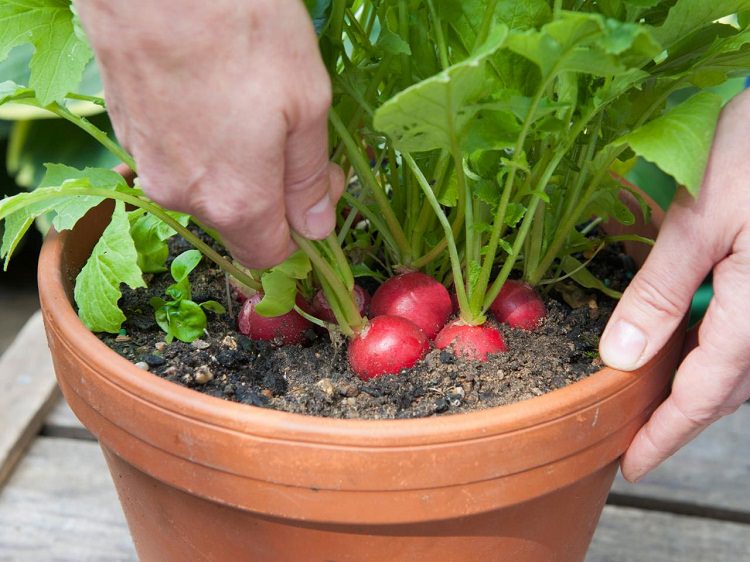
Growing Radish in Container:
- To grow radish in a container, take a huge container first, where you can grow at least 6 to 10 radishes together.
- One container with 8 to 10-gallon capacity would be one great choice for this purpose.
- Now, combine rich organic manure with vegetable starter mix to make the perfect type of potting mix.
- Now fill the container ¾ portions full with this potting mix and sow the seeds ½ inch deep into the soil.
- You can sow at least 4 parted seeds in each row and can make two rows into the container in any case.
- After sowing the seeds, spread some more potting mix from the top and drizzle water until the soil looks moist.
- Keep the soil evenly moist for whole the time, particularly during the germination period which will occur within a week.
- Apply any nitrogen base organic fertilizer to nourish the root of your soil after the gap of the first
- Mulch the base of your root with some light mulch element like grass clippings.
- Seedling the germinated seeds after the duration of 2 weeks and clear the weeds from the soil, if there are any.
- Now all you need is just take adequate care and get proper protection from troubleshooting to get a handful of healthy crops at the end.
Video on step by step growth of daikon radish
Reference Sites:
How to grow radish- soil planting and harvest – almanac
Step by step growth of radish from soil preparation to harvest – wikihow
Radish cultivation – growth and harvest tips – burpee
List of common challenges while growing radish – the spruce
How to Grow Radish from Cuttings:
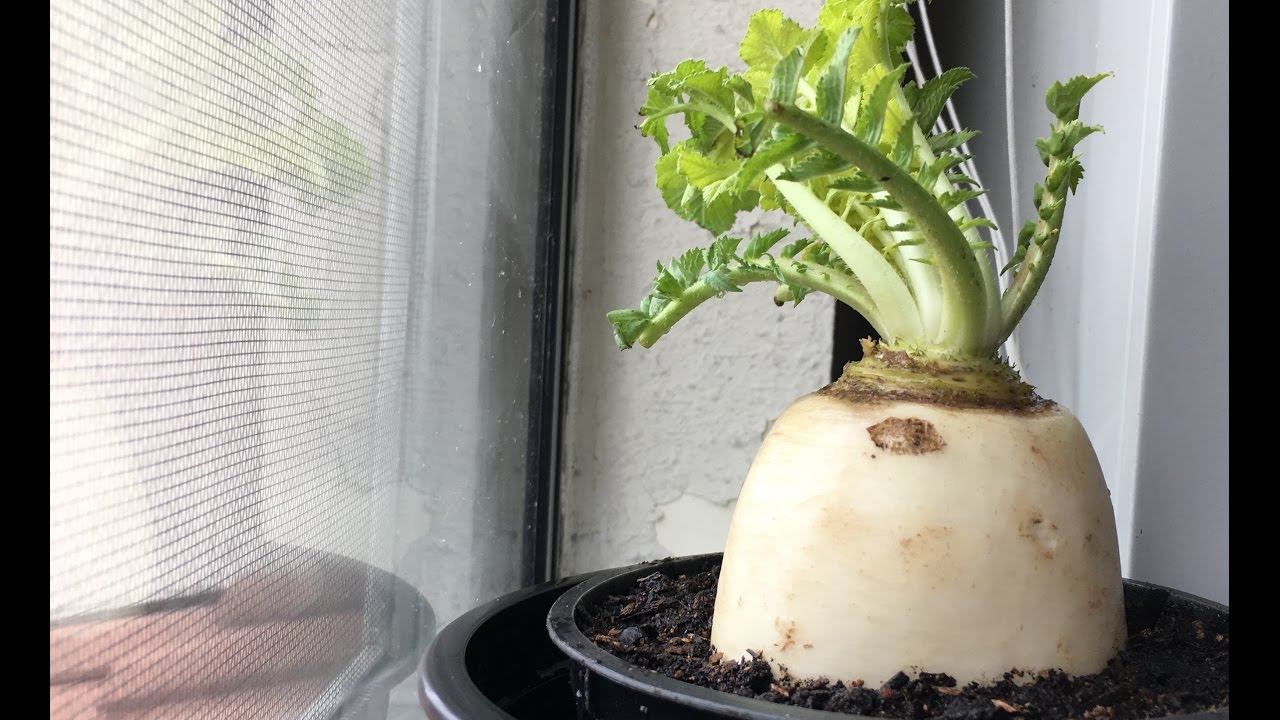
You can actually grow a radish from its cuttings but not only with the top. Thus, when you cut off the top and replant it, this doesn’t give you a new radish plant but only produce some more greens at the end. Hence, it is necessary to know the appropriate procedure of replanting, before starting the course-
- Cut the tip of a healthy radish plant with its root first.
- Now, place or dip the cutting into a moist place like a jar filled with distilled water.
- When the root would start to grow from the bottom, replant it in a fully fertile soil and follow the above-mentioned steps to accomplish the cultivation appropriately.
- If you only want to re-grow the green or leaves of root vegetable then, you can cut off the tip from a healthy and disease free radish plant and place them over a water consistent container.
How did I grow radishes step by step instruction
